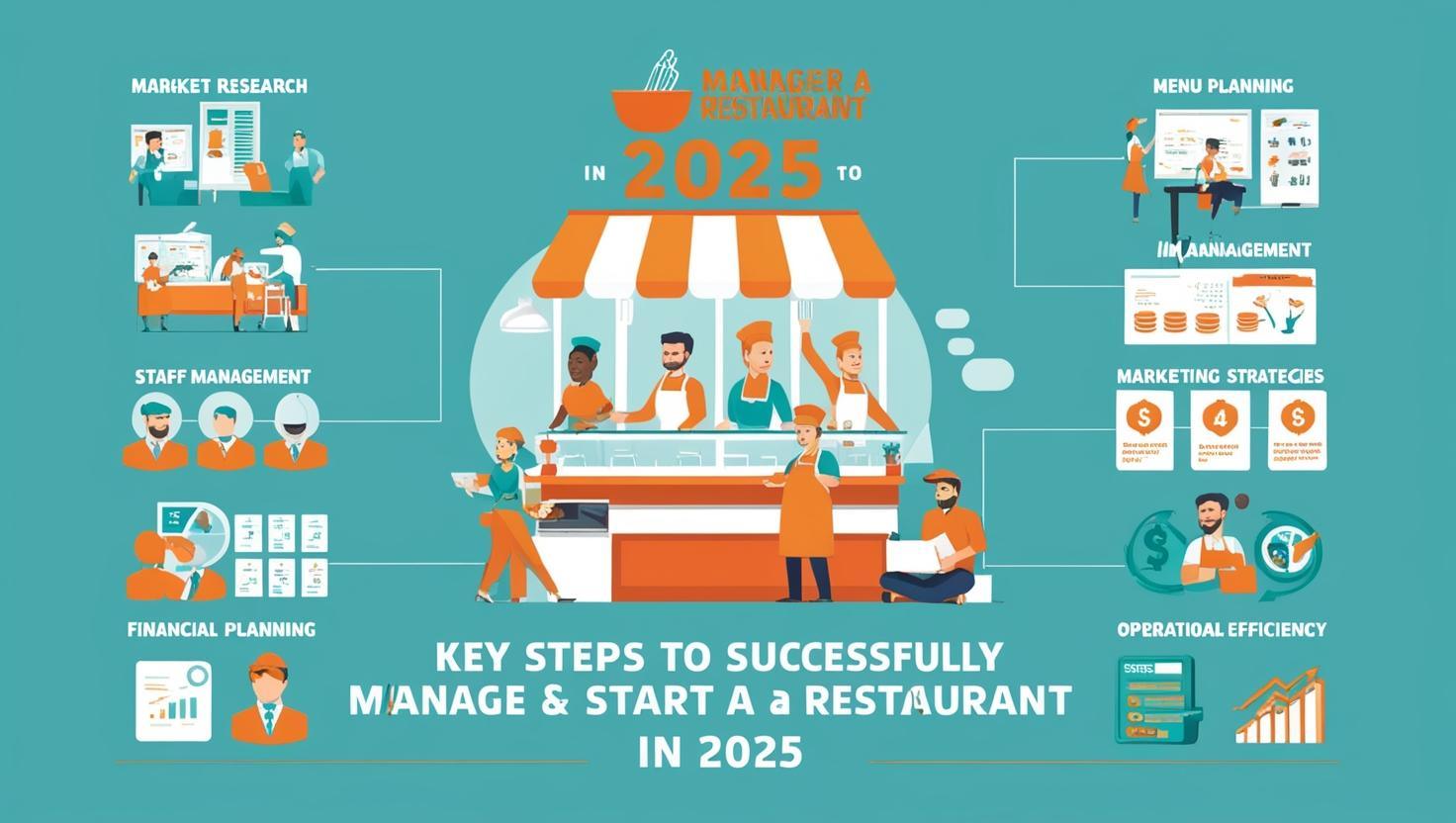Starting a restaurant is a dream for many entrepreneurs — but building one that thrives long-term takes more than great food and passion. To start and manage a restaurant effectively in 2025, you’ll need a combination of strategic planning, operational excellence, and a customer-first mindset.
Whether you’re just beginning your journey or aiming to improve your existing setup, this guide walks you through every essential step of launching and running a successful restaurant business.
1. Start with a Strong Foundation

1.1 Clarify Your Concept
Your restaurant concept is your brand’s identity. Decide whether you want to open a fast-casual spot, fine dining restaurant, food truck, or a themed eatery like vegan street food or fusion cuisine. A unique, well-defined concept will help you stand out from the competition.
1.2 Conduct Market Research
Research local competitors, identify target demographics, and evaluate location opportunities. Understanding dining trends and customer behavior in your area is key to choosing a winning strategy.
1.3 Create a Business Plan
A professional business plan isn’t optional — it’s your blueprint for success. Include details like your budget, menu ideas, marketing strategy, hiring plan, and financial projections. If you need investors, they’ll expect to see this.
2. Learn How to Manage a Restaurant Effectively

Once your restaurant is open, managing it successfully is where the real challenge begins.
2.1 Build a Reliable Team
Great service starts with great people. Carefully hire kitchen and front-of-house staff who align with your vision. Invest in thorough training to ensure consistency and professionalism.
2.2 Use Restaurant Management Tools
Leverage technology to streamline daily operations. Restaurant POS systems, inventory trackers, and scheduling apps help reduce errors and increase efficiency.
👉 “Explore systems like Toast POS or Square for Restaurants for streamlined operations.”
2.3 Track Your Numbers
Monitor key metrics such as daily revenue, food cost percentages, labor costs, and profit margins. Being data-driven helps you make smarter decisions and improve profitability.
3. Focus on Customer Experience

3.1 Deliver Consistent Food Quality
Quality is non-negotiable. Regularly inspect ingredients, test menu items, and maintain kitchen standards. Your reputation depends on it.
👉 “Need help creating your business plan? Use this SBA Business Plan Tool.“
3.2 Provide Outstanding Service
Train staff to be attentive, respectful, and efficient. A great dining experience often matters more than price — and it’s what keeps guests coming back.
3.3 Manage Your Online Reputation
Encourage happy customers to leave positive reviews on Google, Yelp, and TripAdvisor. Respond professionally to negative reviews to show you value feedback and care about improvement.
4. Promote Your Restaurant Online

4.1 Launch a Website and Blog
Your website should be mobile-friendly, easy to navigate, and optimized for search engines. Include menus, online reservation features, and a blog to share updates, behind-the-scenes stories, or tips — boosting SEO and building your brand.
👉 “If you’re just getting started, check out our post on building a restaurant website in 2025.“
4.2 Use Local SEO to Drive Traffic
Optimize your site for “restaurant near me” and other local keywords. Claim your Google Business Profile, add images, and keep your info updated.
👉 “Claim your Google Business Profile and optimize it with quality images and accurate info.”
4.3 Run Promotions and Campaigns
Use email marketing and social media ads to launch targeted campaigns — such as discounts for first-time visitors, birthday rewards, or lunch combo deals.
5. Prepare for Growth and Change
5.1 Stay Ahead of Industry Trends
Keep up with customer demands like sustainability, contactless payments, or plant-based menus. Trends shift fast — adapt before you fall behind.
5.2 Expand Strategically
Once you’ve mastered one location, consider adding a second branch, launching a food truck, or even franchising. Scale only when your operations are stable and profitable.
Final Thoughts
Learning how to start and manage a restaurant in today’s fast-paced industry is both challenging and rewarding. With the right foundation, smart tools, and a commitment to delivering value to your customers, you can build a restaurant brand that not only survives — but thrives.
👉 Thinking of Starting a Restaurant? Here’s Your Complete Step-by-Step Guide for 2025
In addition, if you’re wondering about the general process, this essential guide on how to open a restaurant will help you understand all the basic steps involved — no matter the type of restaurant you have in mind.
For those who want to begin with a smaller setup, we’ve also prepared a dedicated article on how to start a small restaurant. It focuses on budget-friendly strategies and practical steps to get your dream off the ground.
Looking for more inspiration? Take a look at this real-world example of launching a small eatery successfully to learn from others who’ve done it before.
Finally, don’t forget to bookmark our restaurant startup checklist — a free tool to help you stay organized from day one.

